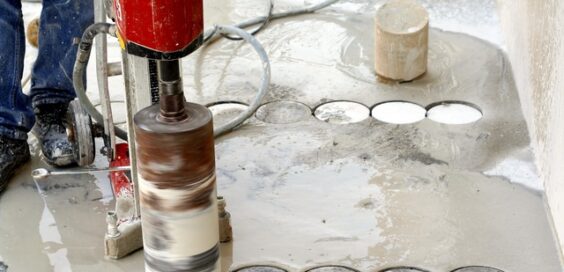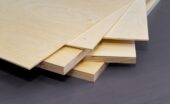Safety Precautions To Take When Coring Concrete
Written by SayBuild-admin // July 31, 2025 // Construction Materials // Comments Off on Safety Precautions To Take When Coring Concrete

Concrete coring ranks among the most demanding construction tasks, requiring precision, power tools, and strict adherence to safety protocols. Whether you’re installing plumbing, electrical conduits, or creating openings for HVAC systems, understanding proper safety measures protects workers and project integrity. We’re outlining the necessary safety precautions to take when coring concrete.
Personal Protective Equipment Requirements
First, workers must wear appropriate protective gear when using coring equipment. Without personal protective equipment (PPE), exposure to concrete dust, debris, and noise levels can cause immediate and long-term damage to workers. Necessary PPE for professionals coring concrete includes:
- Safety glasses or face shields
- Hearing protection
- Respiratory protection
- Steel-toed boots
- Cut-resistant gloves
- Hard hats
It’s up to supervisors to make sure everyone coring concrete or in the vicinity of the work has the necessary PPE to keep their eyes, ears, limbs, and lungs safe.
Equipment Inspection and Maintenance
Operators must thoroughly inspect all coring equipment before each use to ensure proper functionality. Check diamond bits for wear, cracks, or missing segments that could cause dangerous failures, and inspect electrical cords for fraying, cuts, or exposed wiring to avoid electrocution risks.
Verify the secure attachment of safety guards, and test emergency shut-off switches to confirm they respond immediately. Operators should also examine motor housings for any signs of damage or excessive vibration.
Environmental Considerations
Another safety precaution to take when coring concrete is regarding the task’s physical environment. Establish clear boundaries around coring operations and post warning signs to alert others to potential hazards. Workers must have sufficient illumination to identify problems early, while ventilation systems or portable exhaust fans are crucial for removing concrete dust and fumes in enclosed spaces. Water suppression systems control dust and prevent equipment from overheating.
Before starting a coring project, check for underground utilities by contacting local utility services to locate electrical, gas, water, and telecom lines. Ground-penetrating radar can find environmental hazards within concrete structures, like rebar and hidden objects.
Concrete Structural Assessment
Conduct a thorough structural assessment before starting a project involving concrete. Inspect the concrete for cracks, spalling, or other signs of damage that could compromise its integrity. Use non-destructive testing methods, such as ground-penetrating radar or ultrasonic testing, to assess internal conditions and detect hidden weaknesses.
Verify the structure can withstand the work without risk of collapse or further damage. Consult with structural engineers when necessary to determine load capacities and reinforce areas as needed. Document all findings and maintain clear records to inform effective construction or repair decisions.
Concrete coring safety requires attention to detail, the use of proper equipment, and thorough planning to safeguard workers and ensure project success. Staying up to date on evolving safety protocols and best practices through education and industry resources is crucial. By following these measures, worksites become safer, and workers can operate more efficiently without worrying about bodily harm occurring.
Image credentials: by Eaknarin, #102433662








 If you want to contribute tutorials, news or other money-related stuff:
If you want to contribute tutorials, news or other money-related stuff:  Share our home building library with your facebook friends:
Share our home building library with your facebook friends:  Do you have any ideas or suggestions you would like to make?
Do you have any ideas or suggestions you would like to make?  If you like what we do, please subscribe to our
If you like what we do, please subscribe to our  All content Copyright © 2012 SayBuild. Part of nBuy Home Management Network.
All content Copyright © 2012 SayBuild. Part of nBuy Home Management Network.